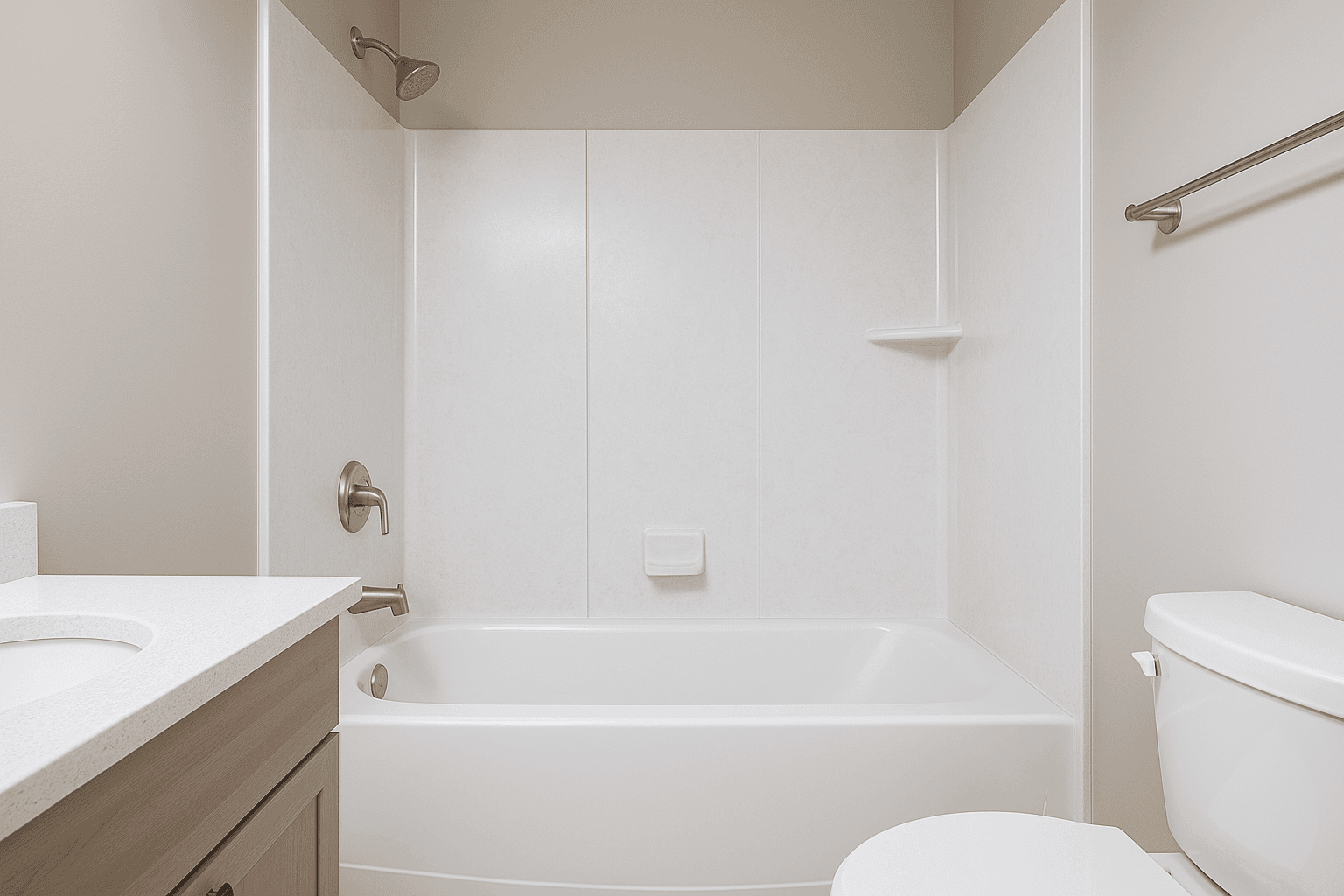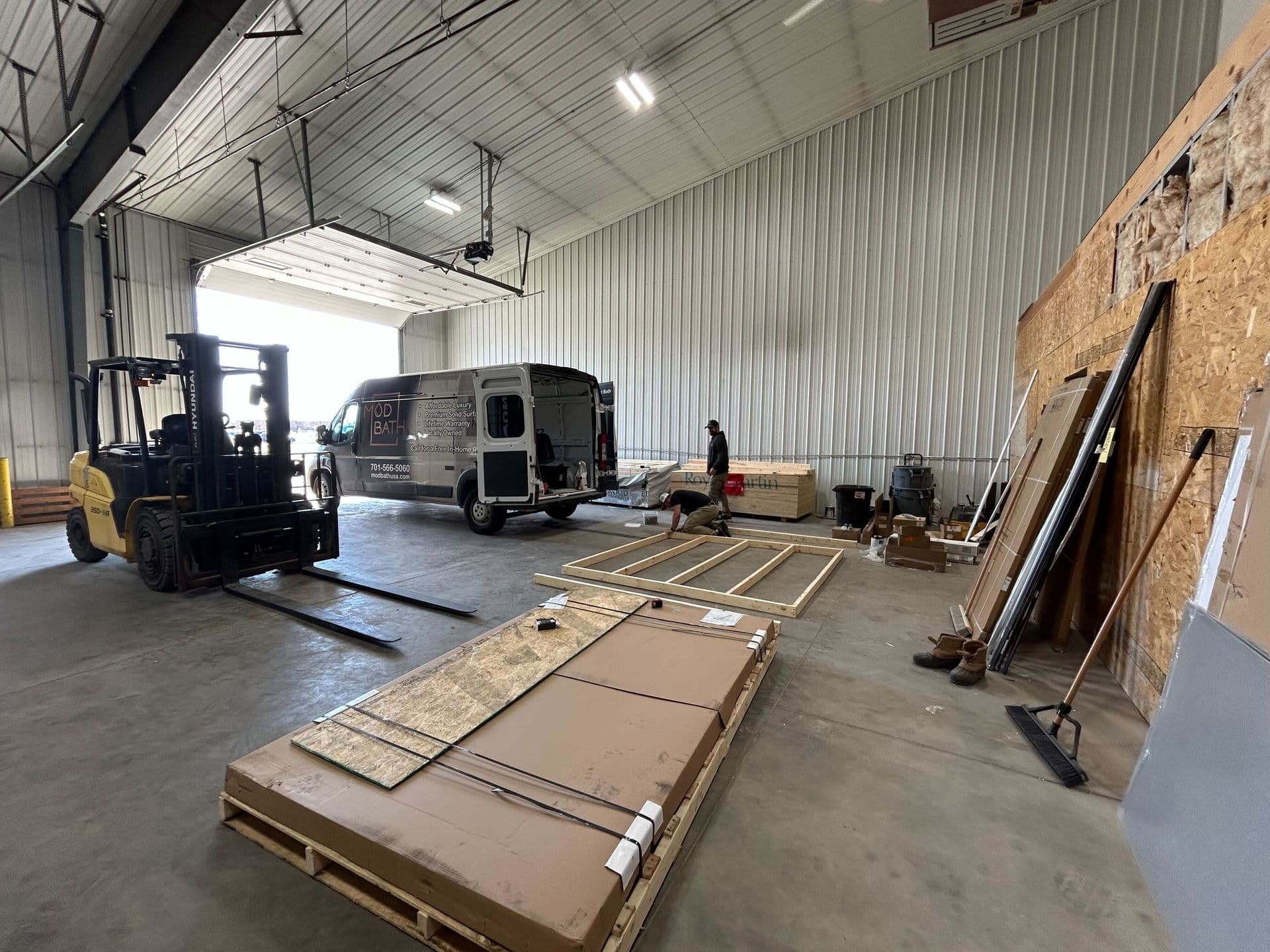Fiberglass vs. Acrylic vs. Solid-Surface Wall Systems — What Can Go Wrong & How to Prevent It

Fiberglass vs. Acrylic vs. Solid-Surface Wall Systems — What Can Go Wrong & How to Prevent It
Every wall system can look great when it’s first installed. The real test comes after a year of hot water, soap, humidity and everyday use. Below are the typical problems seen with three common shower wall systems — fiberglass (FRP/gelcoat), acrylic, and solid surface — why they happen, and how you (or your installer) can help avoid them.
Fiberglass (FRP / gelcoat) walls
What can go wrong
Fiberglass‐based wall systems can suffer from bulging or buckling, leaks at seams, cracking or crazing of the gelcoat finish, and sometimes blistering or yellowing of the surface.
Why these problems happen
These systems often expand or move because of heat and moisture, especially if large sheets are used without allowance for movement or proper joint treatment. The thin gelcoat finish on top can crack (“craze”) under stress or moisture intrusion. Water and steam can get behind edges and trims if the seams, adhesives or installation weren’t done perfectly.
How to avoid the issues
Ensure the installer follows shower‐specific manufacturer instructions: allow for expansion gaps, use full adhesive coverage (“backbuttering”), properly seal all trims and edges, and use compatible waterproof adhesive. Clean and prepare the substrate (wall behind the panels) before installing, because soap film or contamination can hinder adhesion. Also use gentle cleaners rather than harsh abrasives or strong chemicals.
Acrylic wall systems
What can go wrong
With acrylic wall panels you may see warping (sometimes called “oil-canning” where the panel bulges or flexes), seams that leak, stress cracks especially around plumbing fixture holes (valves, arms), and surface damage (hazing, scratching) from harsh cleaners or improper maintenance.
Why these problems happen
Acrylic (PMMA or other acrylic sheet) tends to have a higher thermal expansion than tile or stone. If the panel is rigidly fixed without allowing for movement or proper cure/bracing during installation, bulges or stresses can result. Over‐tightening trims or cutting too tight around holes can cause stress‐cracks. Some cleaners with ammonia, abrasives or strong solvents can damage the finish.
How to avoid the issues
Follow the manufacturer’s installation instructions strictly: brace panels while adhesive cures, leave the recommended expansion gap, don’t overtighten trim or plumbing parts, use correct hole sizes around valves/arms, and clean only with the recommended non-abrasive, ammonia-free products.

Solid‐Surface (e.g., Corian/Onyx‐type) wall panels
What can go wrong
Even though these systems are durable, they’re not foolproof. Possible problems include panels debonding (coming away from the substrate) if the wrong adhesive is used or if the wall behind isn’t properly prepared; heavy panels can get mishandled; problems with seams or caulking still matter since “grout-free” doesn’t mean “seam-free”; surface scuffs or scratches may appear (but can often be repaired, since the material is typically solid through). Also certain product lines might not be intended for high-steam shower environments.
Why these problems happen
Solid‐surface panel systems depend heavily on the full installation as a system: correct adhesive pattern (often silicone or manufacturer‐specified), the right substrate (clean, primed, flat) and proper blocking where heavy fixtures attach. If any part of that chain is weak, the panel may fail. Surface scuffs happen because although the material is solid, the finish still can scratch or abrade. If the spec says “not for steam showers” and you use it in one, that’s asking for trouble.
How to avoid the issues
Install according to manufacturer’s sheet: use the adhesive pattern they call for (for example silicone rings + perimeter bead), ensure the wall behind is approved (clean, primed, recommended board), add blocking behind seats or grab bars, seal and maintain seams, and if scuffs happen, many of these materials can be buffed/sanded to restore. Also check whether the panel system is rated for steam showers (if you plan one).
One more thing most folks miss: what’s behind the walls
It’s not just about the panels you see — it’s about the substrate and moisture management behind them. Building codes in many places limit where you can use certain moisture-resistant gypsum boards (“greenboard”) inside shower compartments; instead you’re often required to use cement backer board, glass-mat backer board or direct‐to‐stud systems designed for wet environments. If you mount panels over the wrong wall board or over a vapor retarder in a “wet zone,” you increase your risk of mold or soft, mushy walls down the line.
Bottom line
Fiberglass (FRP/gelcoat) is affordable and tough in many cases, but only if installation is done right (expansion gaps, full adhesive, sealed trims) — otherwise it may buckle or leak.
Acrylic looks good and is easy to clean, but is more sensitive to installation quality and cleaning/maintenance (brace it, allow movement, don’t use harsh chemicals).
Solid surface costs more upfront, but when installed correctly it’s highly durable, low-maintenance, and repairable — but only if you follow the manufacturer’s system specs (adhesive, substrate, blocking).
Regardless of the panel material you choose, what’s behind the wall and how it’s installed matter just as much. Ignore the substrate or moisture management and you’ll likely regret it.
Need help deciding? We're happy to help. Schedule a visit today.
Contact Us

Mon - Fri: 8:00 AM - 5:00 PM
Sat: 10:00 AM - 2:30 PM
Sun: Closed
